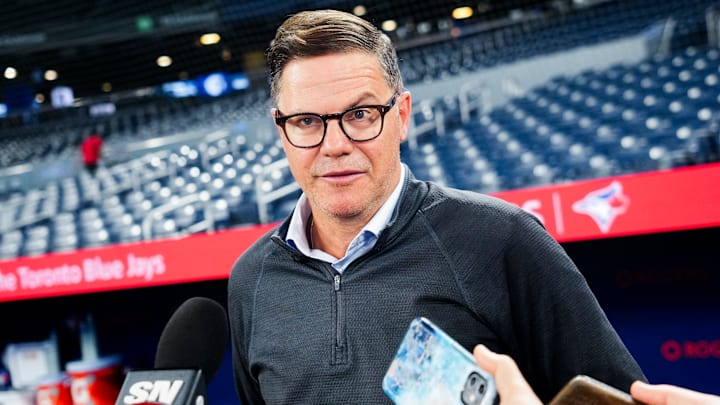The 2024 MLB Draft concluded this week and while the Blue Jays did not have a bad draft on paper, for the most part it was more of the same from a strategy perspective. They again largely targeted pitching and hitters with good plate skills, not a far cry from what the strengths of the big league team were supposed to be entering the year. The pursuit of high contact hitters that control the zone has been an organizational effort. Per Baseball America, the Blue Jays farm system ranked in the top 10 in both contact rate and out of zone swing rate last year. Targeting these kinds of hitters has its drawbacks though and the Jays ranked 29th in 90th percentile exit velocity last year. Needless to say there is a serious lack of power in the system.
The Jays love affair with high floor hitting prospects is no secret. In a paywalled article, Baseball America said:
"The Guardians and Blue Jays have both aggressively targeted hit-over-power players"Baseball America
And in a recent article, Keegan Matheson had something similar to say:
"Toronto likes to target high-contact bats with advanced plate approaches, even if the power is lagging behind."Keegan Matheson of MLB.com
This draft did not feature a heavy investment in hitting prospects but the ones they did draft fit the profile for the most part. Sean Keys in the 4th round has some raw power but it's his minuscule strikeout rate and strong discipline that is likely to drive his pro production as he starts facing more consistent velocity. He's also a fringe fit at third base meaning that if he gets pushed to first base he'll need to hit for some power. Overall, Keys looks like a similar player to Spencer Horwitz (which is not necessarily a bad thing).
Nick Mitchell, picked with the compensation pick received from losing Matt Chapman, is perhaps the most obvious hit-over-power player selected. He projects for minimal power and is a contact focused hitter who has a chance to play center field long term. Aaron Parker in Round 6 is one hitter that doesn't fit the typical Jays mold as he's seen as a power-over-hit player with a shot to stick at catcher. However, outfielder Eddie Micheletti Jr. in Round 8 and outfielder Carter Cunningham in Round 10 were more of the same offensive archetype that the Jays have targeted.
The point being that the Jays aren't switching up their strategy. They rarely target boom or bust players instead opting for polish, a strategy that may have left their farm system as one of the worst in baseball. Now more than ever, it could be time for the Jays to change course and see if they can catch lightning in a bottle. And for a moment there, it seemed like they were positioned to do so:
What do Jays want? Scouting dir. Shane Farrell said today they'll stay flexible, open-minded. Picks are “fairly circumstantial (based on) who's available."
— Ben Nicholson-Smith (@bnicholsonsmith) July 10, 2024
Yet, FWIW, someone with another team said Jays seem poised to “swing for the fences” & embrace risk this yr. We'll see.
With the way the board fell, nobody can blame the Jays for making the smart pick at #20 when they took Trey Yesavage who certainly does not lack polish. But with their 3rd round pick being the lone high school player in the top 10 rounds, it's fair to wonder if they really were looking to swing big at all.
Perhaps this draft works great. You can't take all that much away from the information we have on the public side. Even if you're the team drafting, the MLB Draft is more unpredictable than any of the major North American sports. Despite this, the Blue Jays questionable record of drafting and developing under Ross Atkins is enough to justify skepticism of the process. Is this risk averse process of targeting hitters working? Should the Jays be more willing to target potential star players that might not make it past A ball instead of selecting future 4/5 starters if all works out? There's a lot to critique here and it's part of why there might be someone different drafting this time next year.
